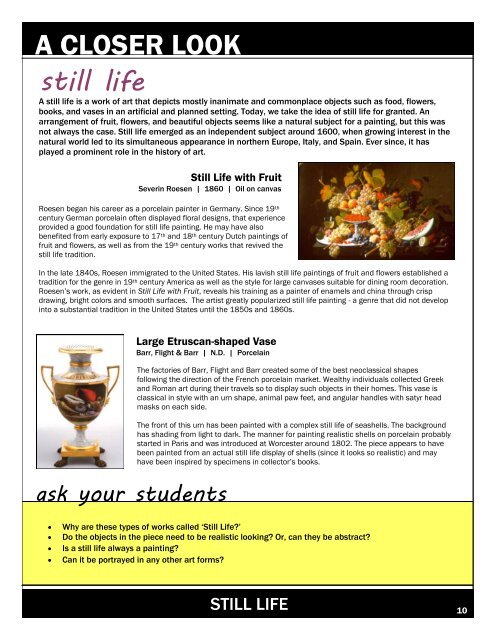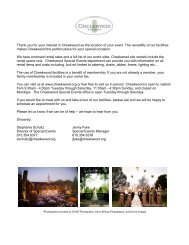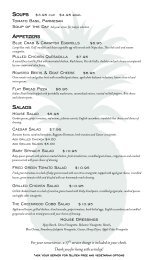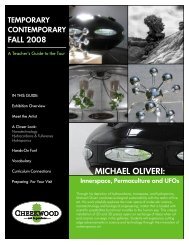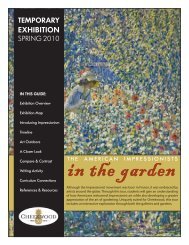Discover Cheekwood - Cheekwood Botanical Garden and Museum ...
Discover Cheekwood - Cheekwood Botanical Garden and Museum ...
Discover Cheekwood - Cheekwood Botanical Garden and Museum ...
- No tags were found...
You also want an ePaper? Increase the reach of your titles
YUMPU automatically turns print PDFs into web optimized ePapers that Google loves.
A CLOSER LOOKstill lifeA still life is a work of art that depicts mostly inanimate <strong>and</strong> commonplace objects such as food, flowers,books, <strong>and</strong> vases in an artificial <strong>and</strong> planned setting. Today, we take the idea of still life for granted. Anarrangement of fruit, flowers, <strong>and</strong> beautiful objects seems like a natural subject for a painting, but this wasnot always the case. Still life emerged as an independent subject around 1600, when growing interest in thenatural world led to its simultaneous appearance in northern Europe, Italy, <strong>and</strong> Spain. Ever since, it hasplayed a prominent role in the history of art.Still Life with FruitSeverin Roesen | 1860 | Oil on canvasRoesen began his career as a porcelain painter in Germany. Since 19 thcentury German porcelain often displayed floral designs, that experienceprovided a good foundation for still life painting. He may have alsobenefited from early exposure to 17 th <strong>and</strong> 18 th century Dutch paintings offruit <strong>and</strong> flowers, as well as from the 19 th century works that revived thestill life tradition.In the late 1840s, Roesen immigrated to the United States. His lavish still life paintings of fruit <strong>and</strong> flowers established atradition for the genre in 19 th century America as well as the style for large canvases suitable for dining room decoration.Roesen‟s work, as evident in Still Life with Fruit, reveals his training as a painter of enamels <strong>and</strong> china through crispdrawing, bright colors <strong>and</strong> smooth surfaces. The artist greatly popularized still life painting - a genre that did not developinto a substantial tradition in the United States until the 1850s <strong>and</strong> 1860s.Large Etruscan-shaped VaseBarr, Flight & Barr | N.D. | Porcelainask your studentsThe factories of Barr, Flight <strong>and</strong> Barr created some of the best neoclassical shapesfollowing the direction of the French porcelain market. Wealthy individuals collected Greek<strong>and</strong> Roman art during their travels so to display such objects in their homes. This vase isclassical in style with an urn shape, animal paw feet, <strong>and</strong> angular h<strong>and</strong>les with satyr headmasks on each side.The front of this urn has been painted with a complex still life of seashells. The backgroundhas shading from light to dark. The manner for painting realistic shells on porcelain probablystarted in Paris <strong>and</strong> was introduced at Worcester around 1802. The piece appears to havebeen painted from an actual still life display of shells (since it looks so realistic) <strong>and</strong> mayhave been inspired by specimens in collector‟s books.Why are these types of works called ‘Still Life?’Do the objects in the piece need to be realistic looking? Or, can they be abstract?Is a still life always a painting?Can it be portrayed in any other art forms?STILL LIFE10


